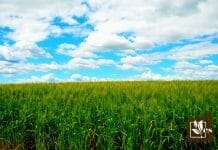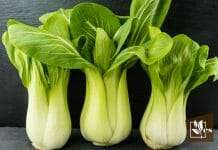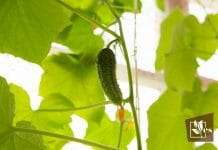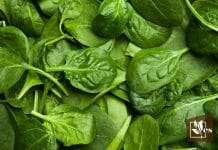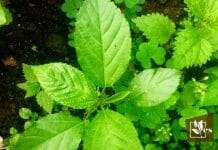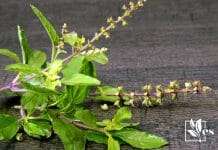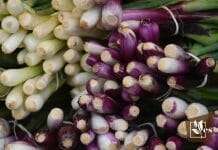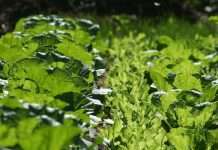- 7 Colorful Dusty Miller Companion Plants To Grow - March 11, 2024
- Giant Green Arborvitae Spacing: All There Is To Know Regarding This - March 5, 2024
- 7 Fruit Trees for Zone 9: The Perfect Fruit Garden - March 4, 2024
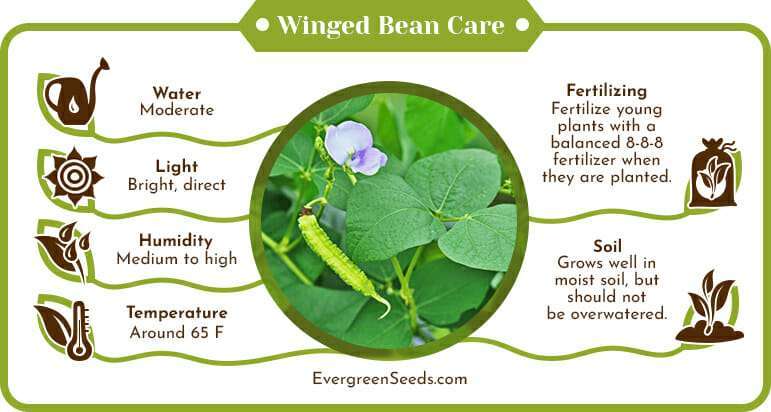 The Winged Bean of the Fabaceae family also known Goa Bean, Four-Angled Bean, Four-Cornered Bean, Manila Bean, Princess Bean, Cigarrillas, and Dragon Bean by various cultures around the world.
The Winged Bean of the Fabaceae family also known Goa Bean, Four-Angled Bean, Four-Cornered Bean, Manila Bean, Princess Bean, Cigarrillas, and Dragon Bean by various cultures around the world.
Only a few gardeners in the United States are familiar with this versatile bean plant variety of the Psophocarpus genus. Every part of the winged bean plant is edible and highly nutritious.
We are going to share all we know about winged beans and give you some helpful advice for successfully growing them at home. You can also check about the yardlong beans which are also very tasteful.
JUMP TO TOPIC
How to Take Care of a Winged Bean in the United States
One of the primary reasons winged beans are not popular in the US is because of the unique growing conditions the plant requires. Until recently, Asian winged beans grown in most of the US would not produce flowers—and therefore seed pods—because of specific daylight requirements. A variety discovered in China has proven to be daylight neutral and is being successfully grown in many parts of the country.
The Hunan winged bean variety can be a successful garden plant for almost anyone, though Northern growers will have short seasons. Winged beans tolerate a variety of soil types and require moderate watering. Cooler climates produce fewer flowers but larger tubers.
Ideal Growing Conditions for Winged Beans
Successful winged bean growers in the US have shared their best practices. Like many legume species, winged beans can be slow starters, but with a few tricks, you can improve their germination rates. The mature seeds should be soaked in clean water for 24 hours prior to planting and benefit from scarification of the seed shell.
Tips for Germination Success
Germination typically takes between 7-21 days and young shoots continue to develop slowly for at least one month. Sprouting seeds should be planted in one inch of soil.
Gardeners will have the most success starting seeds two to three weeks before the last frost and keeping young plants inside until after any chance of frost has passed.
Start seeds in a soilless mix and transfer to rich, well-draining soil when the seed sprouts. Many growers had the best results using a heating pad to aid in germination. Winged bean seeds germinate the best at temperatures between 77 and 85 degrees.
 Sunlight Requirements
Sunlight Requirements
The winged bean originates from tropical areas and loves bright, hot, and humid environments, but has also proven to be resistant to drier conditions when watered properly. The seed pods develop near the end of the growing season when the nights are cool but short. Gardeners in most parts of the United States may see lots of vegetative growth throughout the summer, but no seed pods until late summer or fall.

It is best to plant in areas where the winged bean will get sunlight all day, except in places with excessive heat over 90 degrees in the afternoon. Growers in these regions will do their best to find afternoon shade locations to protect the winged bean plant. In areas with early frost, screens can be used to reduce damage and extend the growing season, often for weeks.
 Soil Conditions
Soil Conditions
The winged bean isn’t picky about soil. In fact, the tuber is capable of stabilizing nitrogen in the soil, which increases plant absorption and creates healthier soil.
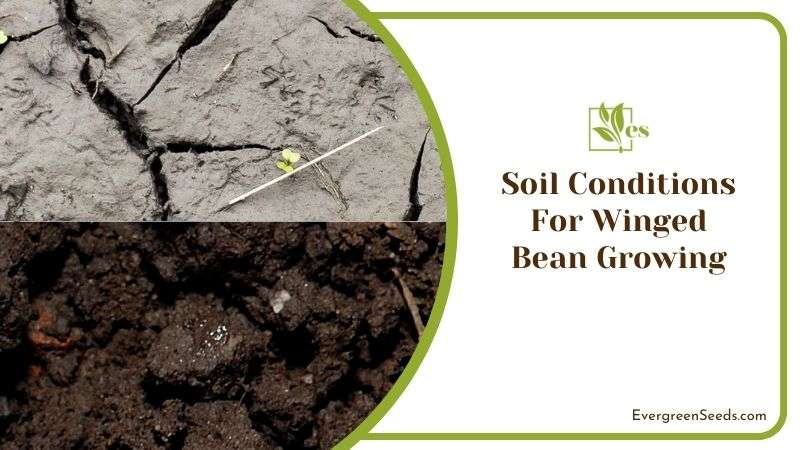
Winged bean plants grow well in moist soil, but should not be overwatered. Consequently, the plant can be stressed by dry conditions near the end of the growing season.
“The taste of winged bean flower has been compared to that of mushrooms, especially when fried. The leaves are delicious raw or cooked like spinach.”
 Fertilizing and Feeding Requirements
Fertilizing and Feeding Requirements
Winged beans are not heavy feeders and don’t require frequent feeding. Fertilize young plants with a balanced 8-8-8 fertilizer when they are planted in the ground or in a container box. It shouldn’t be necessary to fertilize again until bean pods are beginning to mature.
Natural feeding with compost is the best way to grow healthy, strong plants. Compost will provide all of the nutrients your bean plants need so avoid additional feeding. Too much nutrients can cause plants to burn.
Growing Winged Beans in Containers
Growing winged beans in containers is one of the most successful ways to get a good production. Growing these plants in containers lets you closely control soil conditions, water, and makes moving growing plants into better conditions easy.
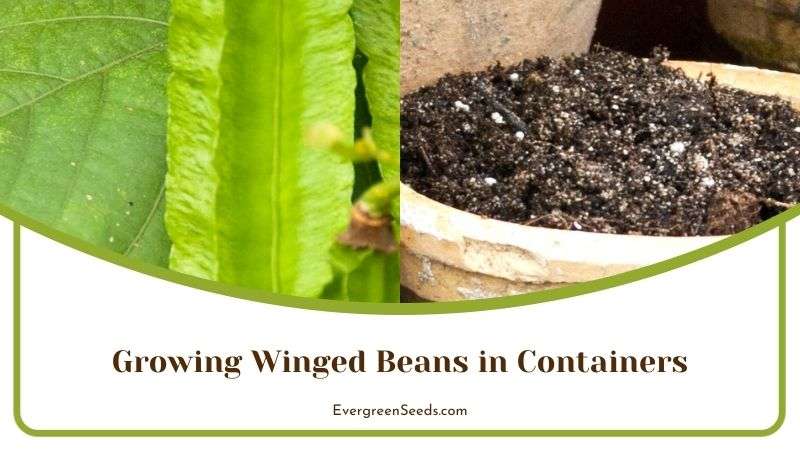
Containers should be large enough to support full-grown plants that may be nine feet tall or more.
Spacing, Depth, and Growing Winged Beans in the Ground
Once beans have sprouted and the soil temperature averages 65 degrees, it’s time to plant your winged beans. If you are transplanting seedlings to the ground, it’s best if you start out with a growing medium that can be directly transferred to the ground. Winged bean seedlings have delicate roots that should not be disturbed when transplanting to the ground.
You should plant winged bean sprouts two feet apart in rows four feet apart. You’ll want to provide a trellis that provides at least eight feet of growth height. Winged bean plants will climb readily, but won’t produce well if not provided with a structure to climb.
Winged bean plants will grow a lot of leaves and vines throughout the hot months of summer. It’s not uncommon for these plants to hold off budding until late in summer. Seed pods form throughout late summer and fall and will continue to fruit until frost conditions.
Harvesting Winged Bean Plants
The Hunan variety produces lots of seed pods once the temperature at night begins to fall. In most growing regions in the US, this will be late summer through the fall. Flowers are harvested when the blooms are full, but you should also remember that every flower represents a seed pod.
You can start harvesting seed pods when they are anywhere from one inch long or bigger. The most desirable bean pods are between two and four inches when they are crisp and tender. Longer bean pods become fibrous and tough.
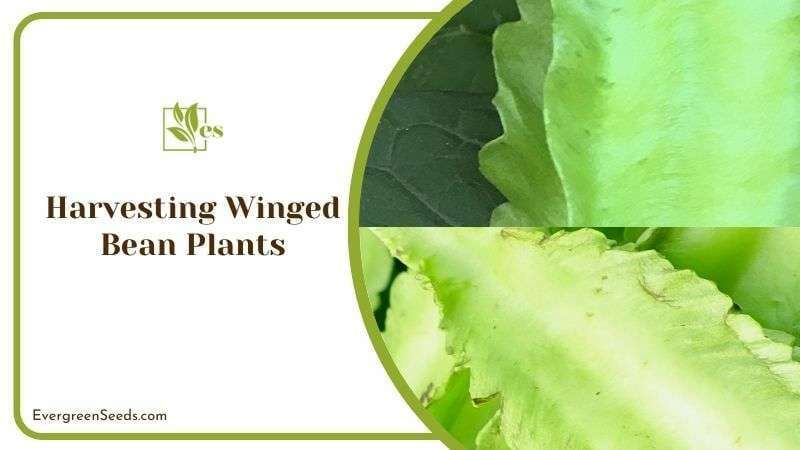
Leaves can be harvested all season. You can remove vining branches growing where you don’t want them and use the leaves in salads or sauteed.
Tubers are harvested in the fall. Winged bean plants grown in cooler climates will have larger tubers. Harvesting tubers will kill the plant, so wait until the end of the season before digging them up.
Growing Winged Beans with Other Plants
In the tropics, Winged bean plants are often grown around banana plants because they improve the soil. A tip US growers gave us is to grow winged beans with corn. The corn stalks will mature and be harvested before the winged bean plant matures and will climb the stalks like a natural trellis.
Winged beans will produce more seed pods when allowed to climb. The plant is an aggressive climber and will often grow taller than nine feet when a trellis is available. This is an ideal plant for gardens with limited space because of the vertical growing characteristics.
Where to Buy Winged Bean Seeds
Winged beans are difficult to find in the garden center at most stores in the US, so gardeners will want to get seeds from their favorite online retailer. Seeds are relatively inexpensive when bought in larger quantities.

Select a seller online who knows whether the variety they sell is a true Hunan variety. There are at least 150 different varieties of winged bean, but only daylight neutral varieties like the Hunan winged bean will be successful in the US.
You also have the option to harvest seeds from mature plants for reproduction. The process is pretty simple and straightforward. When a mature seed pod begins to open, the seed is ready for harvest.
Pests and Diseases Affecting Winged Beans
Winged beans are one of the most resistant plants you’ll find in your garden. There are several major problems that gardeners should be aware of when they decide to plant winged beans.
Most problems can be addressed by gardeners to prevent plants from dying.
Insects Common to Winged Beans
Most of the scientific research concerning insects that feed on winged bean plants are native to India or other parts of Asia. Very little evidence exists of specific pests that impact winged bean plants in the US. The majority of research on winged bean plants involves crops grown in Sri Lanka in 1979 and 1980.
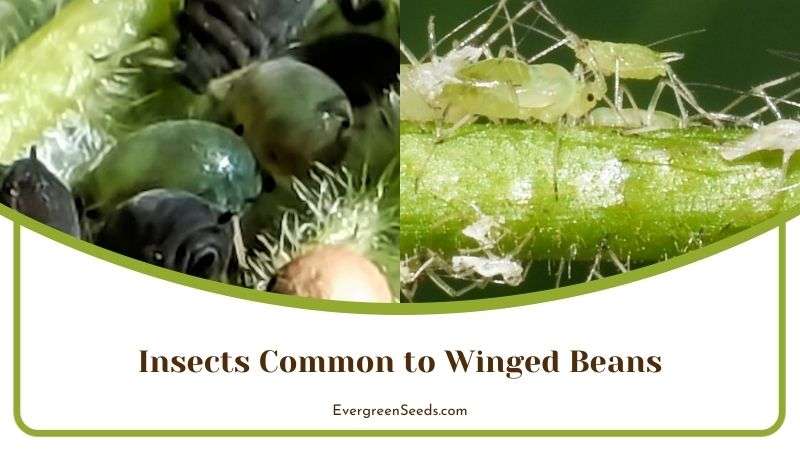
Among US insects, aphids may infest winged bean plants. Other species of caterpillars and beetles that eat bean and pea plants may also affect winged bean plants, including Japanese Beetles. Gardeners can prevent insect infestations of winged bean plants in the same manner as other types of bean and pea plants.
Cutworms will feed on winged bean plants. Cutworms typically emerge in the spring and feed until becoming moths. These small, grey caterpillars come from large, grey, or white grubs you’ll find curled up in the soil. Numerous organic and inorganic insecticides can be useful for controlling cutworms and other caterpillars.
Diseases Common to Winged Beans
The most common disease that impacts winged beans is fungal rot from overwatering. When water pools around the tuber, bacteria can grow rapidly and kill the entire plant. Other diseases include powdery mildew and fungal growth which is more common in moist, cool climates.
Brown spots on leaves are often a sign of fungal blight. There are numerous types of blight out there, and many can impact winged beans along with other bean and pea plants.
Blight is caused by a fungus that can live in the soil for two years. In general, plants infected with blight will need to be removed and the soil will need to be treated before replanting.
How To Treat Diseased Winged Bean Plants
Winged bean plants can be treated like other bean species to prevent infestations of pests and diseases. As soon as you notice any problems, it’s vital that you immediately make a plan to eliminate the issue.
Some diseases such as leaf spot fungus can be treated by clipping off parts of the plant that are diseased. Insects such as aphids can be treated with commercial sprays or homemade insect killers.
Gardeners who are the most successful with winged beans start out with good-quality soil that is free of harmful bacteria. Most problems with bean plants are a result of poor soil. Once plants are established and growing, the winged bean does not present significant problems and can be very easily treated with commercial and homemade products.



